
Freidenreich was comparable, for me, to acquiring a verbal history of Yiddish secular education, in condensed form, of course.
In Fradle and Barry’s elegant living room, surrounded by a stunning collection of objets d’art and artifacts we talked about the recent publication of her new book, Passionate Pioneers: The Story of Yiddish Secular Education In North America : 1910-1960.
In this work, Freidenreich has filled a lacuna in Jewish documentation, addressing a long neglected subject, the history of Yiddish secular education in North America during a particular period.
“I guess my love for Yiddish is embedded in my DNA because I do feel my personal history paved the way towards writing this book. We spoke Yiddish at home which was a cultural meeting center for Jewish intellectuals, especially Yiddish writers.”
Her mother was the celebrated poetess, Bessie Hirshfield Pomerantz and her father, the renowned educator and author Dr. Israel Chaim Pomerantz.
“There is an important part of Jewish life that many people have not been aware of or which has even been overlooked and neglected by historians. That is the story of Yiddish secular education and its influence on the lives of Jews in North America when Jewish immigration was at its height. It was a story that really needed to be told and I decided that one day I would bring to light how it impacted upon our history. Therefore, upon retirement I embarked on this project, a labor of love that took ten years.”
The book covers a prodigious amount of territory, literally and figuratively….. all the schools, camps and other facilities in the USA and Canada where Yiddish was the lingua franca and, in fact, the clay that bound together the new immigrants and their new land. The influence of this was felt in everyday life.
The rich and complex Yiddish culture that was alive in Europe came to the shores of North America along with the hope that the new countries promised, and flourished in 160 Jewish communities of varying sizes, including agrarian colonies. In every small town, in every community, no matter how isolated, a Yiddish school was set up: more than 1000 schools, 39 summer camps and thousands of students.
Freidenreich, who has had a long and distinguished career as an educator in the USA, Canada and Israel, is uniquely qualified to create this important work. From Chicago where she was born, her family moved to Cincinnati and then to New York. She continued on to Montreal where she was awarded her BA in English from Concordia University, received her Masters Degree in Education from the National Lewis University in Chicago, and an Honorary Doctorate from the Jewish Theological Seminary of America. The Pentagon in the USA appointed her to create a curriculum for Jewish members of the military that resulted in seven volumes of work, and was used also by non-Jews.
Her illustrious career includes many years in Canada and the United States, as well as Israel, as teacher, principal, consultant, lecturer, camp director and researcher.
Fradle and Barry made aliyah in 1989. After working in Israel for a number of years, Barry retired from his profession in the fields of computer sciences and artificial intelligence while Fradle continued in her chosen field of education. She created a course in curriculum development while working at Beit Berl Academic College using the Holocaust as the focus of studies, in addition to developing and launching international relations with universities in North America; she did similar work with MOFET, the consortium of teacher training colleges in Israel.
And all the while, the book was germinating in her brain. “I really was inspired to undertake this task because of the emotional pull. I felt I had to reveal this historical drama, a progressive ideal that is not just a footnote but a vital and integral part of Jewish history.”
With determination and devotion and with grants from numerous foundations, Fradle spread the net of her research to envelop and investigate every possible avenue where information on the subject could be gleaned.
“When I embarked on this project I really did not know how far it would take me. I felt like an archaeologist digging around until I got to the mother lode that took the form of disparate pieces of a jigsaw puzzle waiting to be connected. I sent queries to every possible source, to libraries, private collections, archives, Jewish historical societies and to an ever- growing list of more than 800 correspondents. All of which provided me with incredible networking opportunities for contacting others, including those who had been through the system, such as myself.”
“One of the amazing aspects of this research was the fact that Yiddish secular schools spanned the entire range of ideological, sociological and political thought – from right to left to center; from Zionist to Bundist to Socialist to Communist to Territorialist and more, with the common thread of Yiddish as the basis for education.
“Let’s talk about the emotional impact of the use of Yiddish as the language of education in countries where the daily public school curriculum is actually in English. This constituted a cultural phenomenon, founded by immigrants, welded to the Yiddish language and its cultural heritage. The children who attended these schools had to master not only Yiddish literature and language, but in the case of those who attended all-day schools, particularly in Canada, also the regular curriculum in English and French. In the Zionist-sponsored schools, Hebrew and Hebrew literature were also taught. They carried a full workload ...no computers in those days to help aid and abet them “.
It was a vibrant, dynamic world with eager, dedicated teachers, parents and children keeping the flame of Yiddish culture alive and well.
Of course, these schools inevitably disappeared as the progeny became part of the fabric of the host country. Today, only a handful of one and two-day-a-week Sunday schools still have the connection to Yiddish, but their programs are a far cry from the intensive 10 -14 hours a week supplementary school programs of the earlier years.
Fradle added that upon completing the book she felt an enormous satisfaction that it would prove to be a valuable reference source not only for historians but for all people interested in Jewish history.
Nowadays, the Freidenreichs’ lives have taken them into different areas of interest. Their travels are confined to those between Israel and the USA where their three children and three grandchildren live.
“Recently, we added a new citizen to Israel. Our adoptive mother, a feisty 95 year old just made aliyah and I can tell you, her energy and optimism could put a many a younger person in the shade. She will certainly prove to be a valuable asset to the country,” said Barry. “Who knows, maybe I can get her to join the ESRA Hiking Club too.”
Fradle Pomerantz Freidenreich’s book, “Passionate Pioneers,”is available in soft and hard cover editions, and includes a CD of songs sung at the schools and camps. Available through the publisher at www.holmesandmeier.com; through an Israeli distributor or through Amazon.
She will be appearing as guest lecturer at the ESRA College in November speaking on “The Jewish Life Cycle though Yiddish Folk songs.”
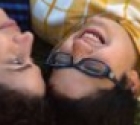 A PLACE OF THEIR OWN
A PLACE OF THEIR OWN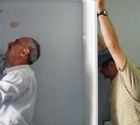 THANK YOU!
THANK YOU!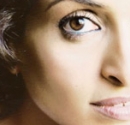 DEAR EDITOR 156
DEAR EDITOR 156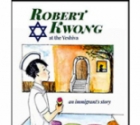 Robert Kwong at the Yeshiva
Robert Kwong at the Yeshiva 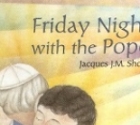 Friday Night with the Pope - A Book Review
Friday Night with the Pope - A Book Review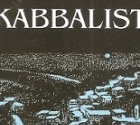 The Kabbalist - A Book Review
The Kabbalist - A Book Review 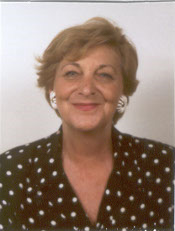 Rolly King Kohansky
Rolly King Kohansky